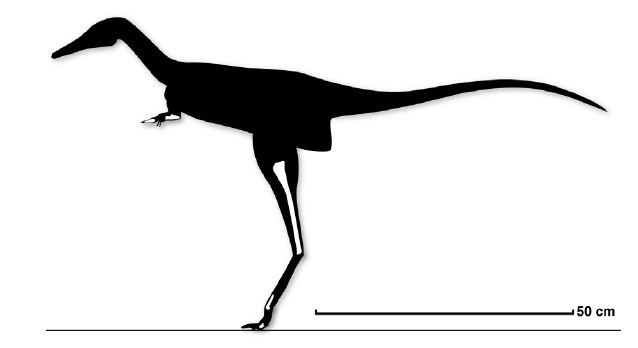When you think of dinosaurs, you don't often think of critters the size of chickens that ran around the ancient forests of America gobbling up termites but that's just what the smallest dinosaur species found in North America was like, according to University of Calgary researcher Nick Longrich, who analyzed bones found during an excavation near Red Deer, Alberta.
Called Albertonykus borealis, the slender bird-like creature is a new member of the family Alvarezsauridae and is one of only a few such fossils found outside of South America and Asia. In a paper published in Cretaceous Research, Longrich and University of Alberta paleontologist Philip Currie describe the anteater-like specimen and explain how it likely specialized in consuming termites by using its small but powerful forelimbs to tear into logs.

"These are bizarre animals. They have long and slender legs, stumpy arms with huge claws and tweezer-like jaws. They look like an animal created by Dr. Seuss," said Longrich, a paleontology research associate in the Department of Biological Sciences. "This appears to be the smallest dinosaur yet discovered in North America."
Longrich studied 70 million-year-old bones that were collected on a dig led by Currie at Dry Island Buffalo Jump Provincial Park in 2002 where the remains of more than 20 Albertosaurus sarcophagus individuals were found. Albertosaurs are a type of tyrannosaur. The bones were placed in storage at the Royal Tyrrell Museum and Longrich came across them while trying to compare Albertosaurus claws to another dinosaur species.
"Proportionately, the forelimbs are shorter than in a Tyrannosaurus but they are powerfully-built, so they seem to have served a purpose," Longrich said. "They are built for digging but too short to burrow, so we think they may have been used to rip open log in search of insects."
"This is the oldest and most complete dinosaur of its kind known from North America and it provides evidence that these dinosaurs migrated to Asia through North America," he said.
Longrich, who specializes in studying dinosaur-era ancestors of birds, completed his PhD at the University of Calgary under the supervision of zoology professor Anthony Russell. In September 2006 Longrich argued that that earliest known ancestor of birds, a feathered creature called Archaeopteryx, likely flew with wings on all four limbs after examining fossils originally collected in Germany in 1861.
"You can really find amazing things if you just keep looking at fossils we already have sitting in museum collections," he said. "The number of dinosaur discoveries is actually accelerating because we just keep digging up more material to work with."
Article: Longrich et al. Albertonykus borealis, a new alvarezsaur (Dinosauria: Theropoda) from the Early Maastrichtian of Alberta, Canada: implications for the systematics and ecology of the Alvarezsauridae. Cretaceous Research, August 2008; DOI: 10.1016/j.cretres.2008.07.005





Comments